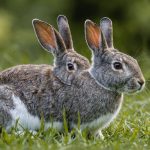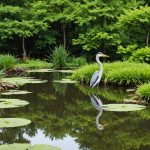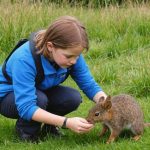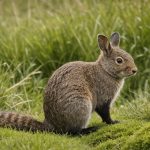Overview of Local Wildlife in the UK
Exploring the local wildlife in the UK unveils a rich tapestry of biodiversity that plays an essential role in the ecosystem. From the majestic red deer wandering through the Scottish Highlands to the hedgehogs ambling in suburban gardens, these creatures showcase the diversity thriving within the UK’s varied landscapes. Such biodiversity is not only fascinating but crucial for maintaining a balanced ecosystem.
Common UK Wildlife Species
The UK is home to a variety of species. Birds like the European robin and the elegant swan grace its skies and waterways. Meanwhile, mammals such as the fox and the badger navigate rural and urban settings. These animals not only sustain the food chain but also contribute to biodiversity education by sparking interest and awareness among people of all ages.
A lire en complément : Top Strategies for UK Residents to Reduce Bird-Glass Collisions in Skyscrapers
Importance of Biodiversity
Understanding the significance of biodiversity within an ecosystem reveals insights into how plants and animals support each other. For instance, pollinators like bees are essential for plant reproduction, ensuring food supplies and ecological stability.
Role of Wildlife in Environmental Education
Engaging with UK wildlife encourages ecosystem awareness, fostering respect and knowledge of natural processes. Education programs often utilise wildlife as a tool to promote sustainable practices, empowering individuals to make environmentally informed choices. This comprehensive approach ensures future generations value and protect their natural heritage.
Dans le meme genre : Top Tips for UK Residents to Respect Wildlife While Enjoying the Great Outdoors
Importance of Teaching Local Wildlife
Teaching local wildlife provides significant educational benefits by sparking students’ curiosity and enhancing their learning experience. Observing wildlife directly engages students, making lessons more interactive and memorable. They’re more likely to understand concepts like food chains and ecosystems when they see them in action, leading to a deeper grasp of environmental science. Wildlife education also nurtures a sense of environmental stewardship—students learn not only to appreciate nature but to protect it. This lessons empower them with the knowledge to make responsible decisions for the environment.
Engaging with local wildlife encourages students to adopt environmental stewardship as a lifelong practice. When individuals understand their community’s ecosystem, they’re more likely to advocate for its preservation. Knowing one’s local wildlife imbues a sense of connection and responsibility.
Moreover, community engagement is bolstered when schools facilitate activities like wildlife observation. Students and community members can participate in local initiatives, fostering community engagement through collective, nature-focused efforts. Such activities open doors for collaboration, allowing various groups to contribute towards a common goal: environmental sustainability.
Ultimately, teaching local wildlife enriches education and strengthens community engagement, ensuring future generations are equipped to become proactive stewards of their environments.
Interactive Activities for Primary School Students
Hands-on activities serve as an enriching medium for age-appropriate education when it comes to exploring the wonders of wildlife.
Nature Scavenger Hunts
Embarking on a nature scavenger hunt ignites curiosity through outdoor exploration. It enhances observational skills and allows children to interact directly with the environment.
Steps to organize a scavenger hunt include:
- Selecting a safe, accessible location with a variety of natural features.
- Creating a list of items or phenomena for students to find, such as different leaf shapes or types of rocks.
- Providing students with tools like magnifying glasses and notebooks for documenting discoveries.
Resources needed might also include guides on local wildlife to help children identify their findings accurately.
Building Bug Hotels
Insects play a crucial role in ecosystems. Building bug hotels educates students about biodiversity and conservation.
The construction process involves:
- Gathering natural materials like twigs, leaves, and bamboo.
- Stacking these materials within a wooden frame to create habitats for insects.
- Placing the hotel in a sheltered area of the garden.
This activity illustrates insects’ vital environmental role, augmenting educational outcomes.
Birdwatching Sessions
Promoting observation skills is best supported through birdwatching sessions. Using binoculars and field guides as tools for bird identification, students learn methodical observation techniques.
Encourage documentation by sketching or note-taking, aiding memory retention. Such sessions can be woven seamlessly into the curriculum, fostering an appreciation for avian life and natural habitats.
Advanced Activities for Secondary School Students
Engaging secondary school students in conservation projects is crucial for developing their analytical skills and understanding of ecological systems. These activities can enhance students’ learning experiences through hands-on involvement and real-world applications.
Local Wildlife Surveys
Conducting local wildlife surveys offers students a unique opportunity to immerse themselves in field studies. The methodology involves systematic observation, where students learn to identify species and monitor populations. Precision in data collection is paramount, ensuring that information is accurate and reflects true biodiversity levels. Data collection and analysis using software tools can sharpen students’ analytical skills, as they interpret the data to draw meaningful conclusions. Such activities are not only educational but also engage students in active research, fostering a sense of responsibility towards their environment.
Habitat Restoration Projects
Habitat restoration projects play a pivotal role in maintaining native habitats. These initiatives teach the importance of biodiversity and ecosystem balance. Students can participate in steps such as site assessment, planning, and planting native species. Collaborating with local conservation groups offers an enriching experience, providing mentorship and resources. These collaborations can help students see the immediate impact of their work, motivating them to pursue further environmental endeavours.
Photography and Art Projects
Photography and art provide creative outlets for students to express their understanding of wildlife. Organizing competitions or exhibitions can encourage students to capture the essence of nature through photographs or artistic interpretations. Additionally, photography acts as a tool for wildlife documentation, recording species for future studies. These approaches bridge scientific and artistic perspectives, fostering a holistic appreciation of the natural world.
Resources for Educators
In the realm of wildlife education, having access to the right teaching resources is invaluable. These resources not only enhance learning experiences but also align educational content with curriculum links in science and geography. For educators striving to inculcate a deeper understanding of wildlife and natural ecosystems, several organisations offer valuable support and materials.
Educational Materials and Websites
To effectively integrate wildlife topics into the classroom, educators can turn to reputable websites that offer comprehensive lesson plans, activities, and multimedia content. Websites like the National Geographic Education portal and the BBC Nature Education Hub provide free, high-quality resources tailored to different age groups.
Moreover, organisations such as the World Wildlife Fund (WWF) and the United Nations Environment Programme (UNEP) deliver invaluable educator support by offering workshops, training, and materials that are constantly updated to reflect current environmental challenges.
Curriculum Integration
Aligning wildlife education with standard curriculum requirements can sometimes be daunting. Fortunately, resources are available that map wildlife topics to curriculum links within science, geography, and even social studies standards. Educators are encouraged to utilise these links, ensuring students gain relevant skills and knowledge applicable to their coursework.
By leveraging a robust network of resources and support, educators can create impactful and engaging learning experiences tailored to meet the needs of their students while aligning with educational standards.
Connecting Activities to Conservation Efforts
Encouraging involvement in conservation awareness begins locally. Sustainable practices in local communities not only protect the environment but also improve the quality of life. By focusing on community projects, individuals can see the direct impact of their actions. For instance, sustainable agriculture initiatives are making waves in the UK, where communities are adopting organic farming methods to reduce pollution and conserve biodiversity.
Sustainability education is pivotal in fostering a deeper understanding of these practices. Empowering students to engage with real-world conservation initiatives bridges theoretical learning with practical action. For example, students in certain schools are participating in tree-planting drives and waste management programmes. These activities not only enhance their knowledge but also help schools adopt more sustainable practices.
Community projects such as local wildlife preservation efforts provide tangible ways for students to contribute. They gain hands-on experience and witness the challenges and success stories of conservation firsthand. By understanding the intricacies of these projects, students develop a stronger connection to environmental protection.
To truly embed these practices, it is vital to incorporate conservation awareness into educational curriculums. Schools can function as hubs for sustainability education, preparing future generations to continue these crucial efforts. This approach ensures that conservation becomes an integral part of everyday life, fostering a culture of care and responsibility towards the planet.











